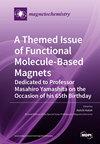Dynamics of Non-Magnetic Droplets and Bubbles in Magnetic Fluids in Microfluidic Channels under the Influence of a Magnetic Field
IF 2.5
4区 化学
Q2 CHEMISTRY, INORGANIC & NUCLEAR
引用次数: 0
Abstract
The microfluidics of magnetic fluids is gaining popularity due to the possibility of the non-contact control of liquid composite systems using a magnetic field. The dynamics of non-magnetic droplets and gas bubbles in magnetic fluids were investigated for various configurations of magnetic fields, coatings, and channel geometries, as well as the rate of component supply and their physical properties. Optimal regimes for forming droplet and bubble flows were determined. The mechanism for non-contact control of the size of droplets and bubbles using a magnetic field is proposed in this article. The dependences of the sizes of non-magnetic inclusions in magnetic liquids on the continuous phase flow rate and the displacement of magnets were obtained. The obtained dependences of the volume of non-magnetic inclusions on the flow rate of the continuous phase follow the classic dependences. Changing the size of air bubbles can be achieved by shifting the magnet from −5 mm to +2 mm. The ratio of the maximum and minimum breakaway inclusion varies from 5 to 2 depending on the flow rates of the continuous phase. The range of changing the size of oil droplets with the displacement of magnets is from 1.1 to 1.51. These studies show how, with the help of various mechanisms of influence on microfluidic flows, it is possible to control the size of bubbles and droplets forming in microchannels. The obtained data can be applied for controlled microfluidic dosing and counting devices.磁场作用下微流控通道中磁性流体中非磁性液滴和气泡的动力学
磁流体的微流体学由于利用磁场对液体复合系统进行非接触控制的可能性而越来越受欢迎。研究了磁性流体中非磁性液滴和气泡在不同磁场、涂层和通道几何形状下的动力学,以及组分供应速率和它们的物理性质。确定了形成液滴和气泡流动的最佳条件。本文提出了利用磁场对液滴和气泡大小进行非接触控制的机理。得到了磁性液体中非磁性夹杂物大小与连续相流速率和磁体位移的关系。所得的非磁性夹杂体体积对连续相流速的依赖关系遵循经典的依赖关系。改变气泡的大小可以通过将磁铁从- 5毫米移动到+2毫米来实现。根据连续相的流速,最大和最小分离夹杂物的比值从5到2不等。油滴大小随磁体位移变化的范围为1.1 ~ 1.51。这些研究表明,借助对微流体流动的各种影响机制,如何有可能控制微通道中形成的气泡和液滴的大小。所得数据可用于可控微流控加药和计数装置。
本文章由计算机程序翻译,如有差异,请以英文原文为准。
求助全文
约1分钟内获得全文
求助全文
来源期刊

Magnetochemistry
Chemistry-Chemistry (miscellaneous)
CiteScore
3.90
自引率
11.10%
发文量
145
审稿时长
11 weeks
期刊介绍:
Magnetochemistry (ISSN 2312-7481) is a unique international, scientific open access journal on molecular magnetism, the relationship between chemical structure and magnetism and magnetic materials. Magnetochemistry publishes research articles, short communications and reviews. Our aim is to encourage scientists to publish their experimental and theoretical results in as much detail as possible. Therefore, there is no restriction on the length of the papers. The full experimental details must be provided so that the results can be reproduced.
 求助内容:
求助内容: 应助结果提醒方式:
应助结果提醒方式:


